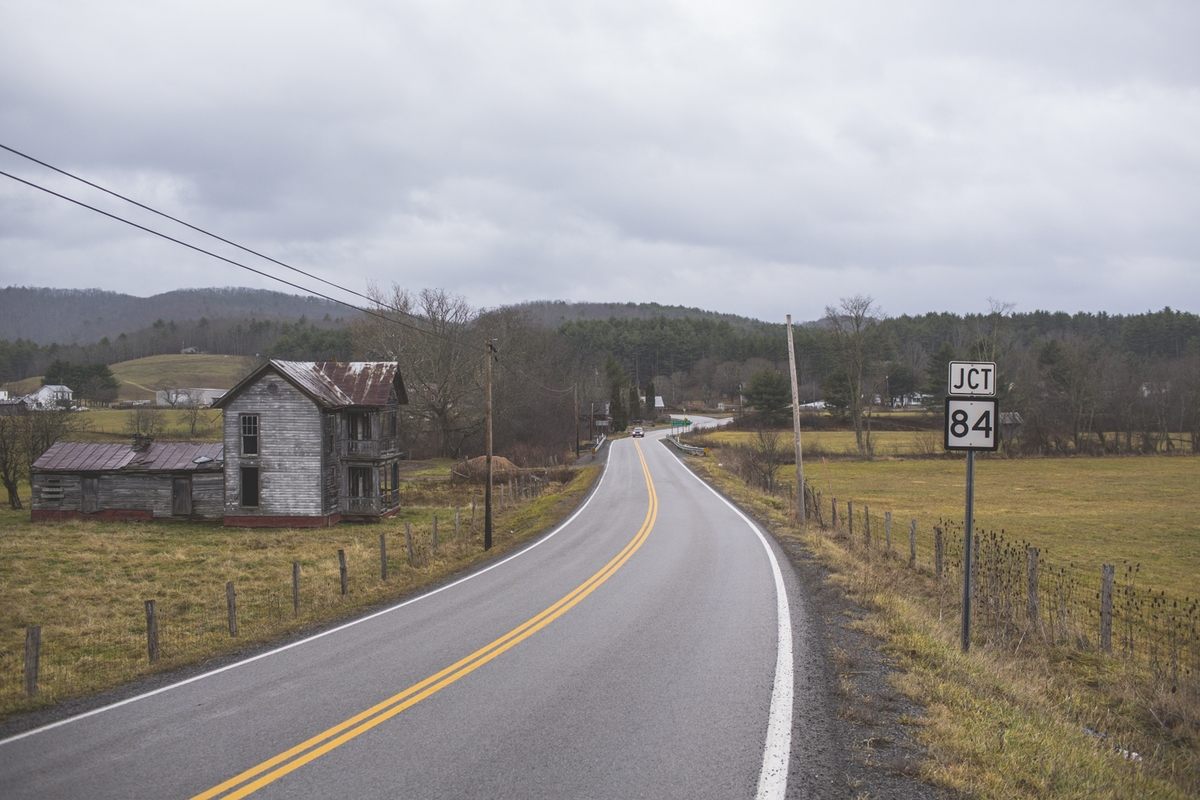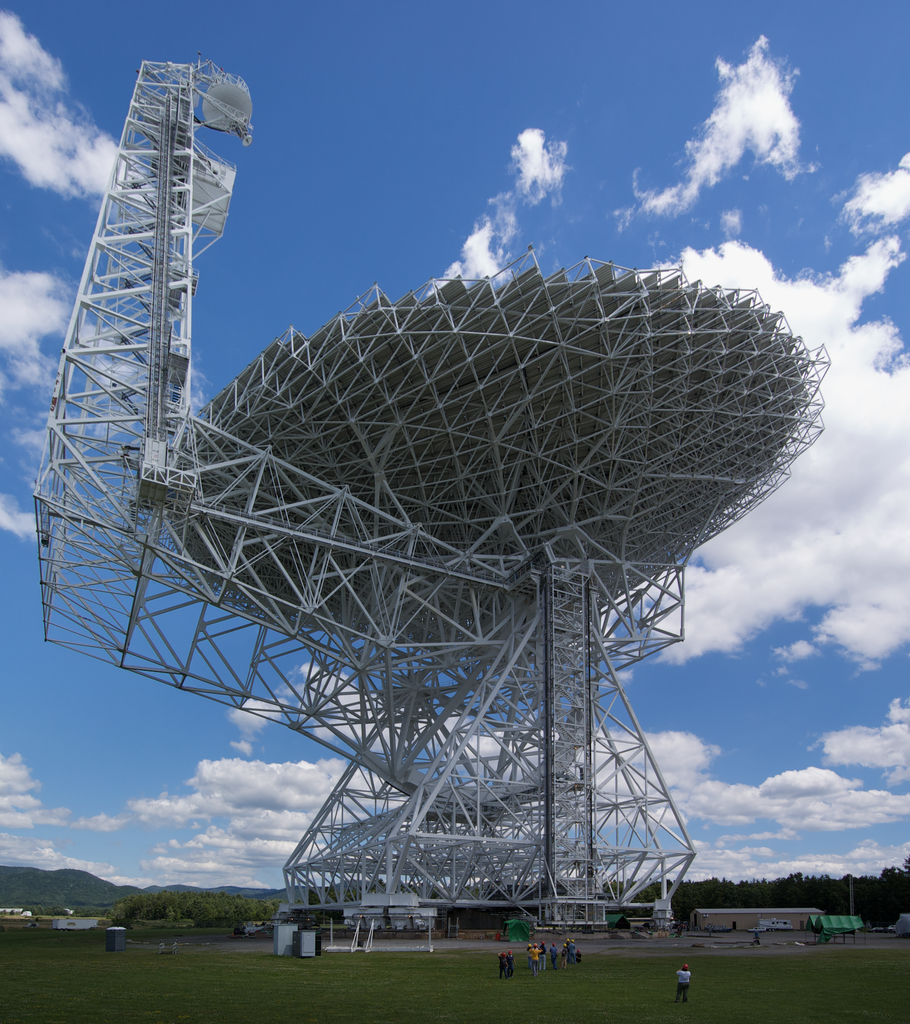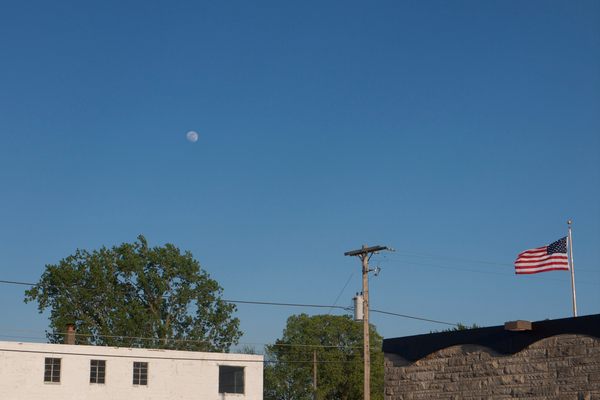Inside the ‘Quietest Town in America’
Green Bank, West Virginia is a place without internet—or even microwaves.

The road dropping down into the town of Green Bank, West Virginia. (Photo: Josh Cogan)
In Green Bank, West Virginia, population 143, the only thing eerier than the silence is the strange white truck, outfitted with giant rooftop antennas, that coasts up and down the streets of the rural town like a high-tech ghost ship.
Also known as the Quietest Town in America, Green Bank sits at the heart of the USA’s National Radio Quiet Zone, a 13,000-square-mile area straddling the mountainous border of Virginia and West Virginia. Within this zone, all broadcast transmissions are highly regulated, and once you get to Green Bank itself, the dial goes entirely silent. It’s a place whose few residents exist at both ends of the technological continuum: there’s a high concentration of scientists, as well as those looking to escape digital life altogether.
You can blame aliens. Sort of. Green Bank’s National Radio Astronomy Observatory is home to the world’s largest fully steerable radio telescope, which—among its many scientific uses—is currently engaged in the project of scanning the farthest reaches of space for signs of extraterrestrial activity. To ensure the proper functioning of the telescope and other super-sensitive equipment found at the observatory, almost all forms of wireless communication, along with anything else that could interfere with the telescope’s operation, are strictly banned in the area and prosecutable by law.

Up close with the Green Bank telescope. (Photo: Public Domain)
In practice, this means that when you turn on the radio, and you’ll hear nothing but static on every frequency. Try to use your cell phone and you’ll discover that there’s no reception at all, no matter how great your carrier claims to be. Forget Hot Pockets for lunch: in Green Bank, microwave ovens are technically off-limits. And don’t even think about hooking up a wireless router at home. If you do, you’ll be getting a knock at the door from whomever’s driving that white truck, which roams the area searching for stray bits of electromagnetic interference and enforcing the ban. (The truck has been known to bust people for infractions as obscure as malfunctioning electric blankets.)
“What we have here is an amazing combination of a very rural atmosphere with extremely high technology,” Jay Lockman, the telescope’s principal scientist, told CNN. “If you want to hear quiet noises, you need to keep the noise down.”
If that kind of silence actually sounds kind of nice to you, you’re not alone in thinking so. While the National Radio Quiet Zone was established way back in 1958, it’s only recently that it’s started to attract residents who have moving here to escape the ambient clutter of the digital age.
These are not exhausted techies, looking for a digital detox. Instead, these recent arrivals believe that the multitudes of electromagnetic frequencies bouncing around in the air—caused by everything from cellphones to fluorescent lights—are literally making them sick with all manner of physical maladies. These WiFi refugees see Green Bank as their last, best hope for finally regaining their health, and often arrive after having already tried what many would consider more drastic measures for protecting themselves.

The Robert C Byrd telescope and an outbuilding at the National Radio Astronomy Observatory in Green Bank, West Virginia. (Photo: Library of Congress/LC-DIG-highsm-34483)
One Green Bank resident, Diane Schou, came to town in 2007 after spending several months living in a giant, homemade Faraday Cage, a box built from a grounded metal screens to keep out electromagnetic influences. (Think of it as a fancier version of a tinfoil hat.)
According to the Washingtonian, Schou even also considered the idea of buying a retrofitted space suit so she’d be able to leave her home, but says considered the $24,000 price tag beyond her means. “I don’t have that kind of money. And what if it gets a hole in it?”)
It’s ironic, then, that Green Bank, where people come to escape the perils of modernity, is also home to some of the world’s most advanced technology. The Robert C. Byrd Green Bank Telescope (which, in addition to being the world’s largest steerable radio telescope, is also the world’s largest movable land object) is capable of hearing sounds from hundreds of millions of miles away, and has uncovered astonishing astronomical phenomena like millisecond pulsars in the global cluster Messier 62, a hydrogen gas superbubble 23,000 light years away, and sugar—yes, sugar—in the far reaches of space. Alien radio signals have yet to be discovered, but the telescope has recently received an influx of cash for that effort from Breakthrough Listen.
But even in the Quietest Town in America, there are signs that the noise might be starting to seep in. Only 18 miles away from the NRAO, the Snowshoe Mountain Ski Resort has begun offering in-room wifi to vacationers, thanks to an elaborate system that was carefully engineered to comply with regulations and ensure that the telescope’s operations remain undisturbed. Meanwhile, resourceful teenagers—ever the source of progress, unwanted or otherwise—are finding creative ways to use their smartphones, mostly using to contraband home wifi. And the Green Bank Telescope is under constant threat of being shuttered due to government defunding.
For now, though, the white truck keeps circling. The telescope keeps scanning. The wifi refugees keep arriving. And life in Green Bank goes on as it always has: quiet, peaceful, and a little bit strange.
These articles are brought to you by Netflix's Stranger Things. All Episodes Now Streaming.








Follow us on Twitter to get the latest on the world's hidden wonders.
Like us on Facebook to get the latest on the world's hidden wonders.
Follow us on Twitter Like us on Facebook